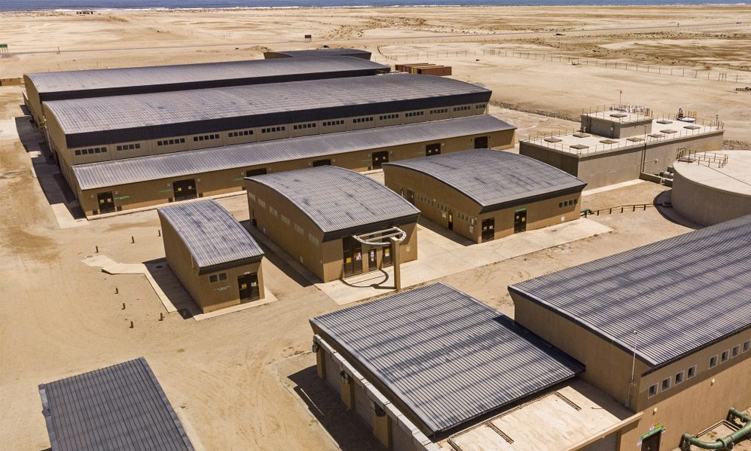The Erongo Desalination Plant (EDP), operated by Orano Mining Namibia, can ensure a long-term water supply to the region.
The plant, which was initially built to supply water to the Orano’s Trekkopje Mine, has been providing water to NamWater since 2013, said Orano Mining managing director Tommie Gouws during the opening of the EDP visitors’ centre on Tuesday.
He said the plant currently has the capacity to produce 20 million cubic metres of water per year. The existing infrastructure allows for expansion up to 25 million cubic metres, with the potential to further expand to 45 million cubic metres.
Over the years, EDP has increased its water production in response to the growing demands of the mining industry and its customers. The primary consumers of the desalinated water are the mines and local authorities, who currently receive around 13,3 million cubic metres annually. The anticipated start of the Langer Heinrich uranium mine next year will add another 2,3 million cubic metres to the demand, bringing the total to about 15 million cubic metres, which is still well within the plant’s capacity, said Gouws.
“Considering additional upcoming projects and potential new mines, the total water demand could reach 25,2 million cubic metres. Even with this increase, the plant can still meet the region’s water needs until at least 2030, within its current capacity, before needing to expand up to 45 million cubic metres,” he emphasised. “This untapped capacity ensures that EDP can comfortably supply water to the region and its industries in both the medium and long term.”
EDP, which was built at a cost of over N$2 billion between 2007 and 2011, remains in “excellent condition”.
“Its mechanics are still functioning well, and a robust preventative maintenance programme, along with ongoing efficiency improvements, ensures the facility’s continued reliability,” said Gouws, adding that to date the plant has produced over 91 million cubic metres of water and is expected to reach the 100-million-cubic-metre mark by December.
While the desalination plant has a long-term capacity to handle the water needs in the region, it faces one significant challenge: sulphur. Sulphur levels in the water are highly unpredictable, and managing the sulphur has been an ongoing issue.
The sulphur levels can spike up to 1 400 parts per million, a significant increase from the normal operating levels of around 40 parts per million.
“Unfortunately, there is currently no practical way of managing these sulphur spikes […] investing in managing the spikes has not yet proven feasible,” he said.
Asked whether a second desalination plant at the coast was necessary, Gouws told The Namibian that Orano is promoting the development of reservoir capacity.
“Our plant has underutilised capacity and ramp-up capability, which could be tapped into by maximising storage. Increase reservoir capacity would ensure adequate water supply during sulphur spikes and minimise the impact of disruptions on the region’s water supply,” he said.
Erongo governor Neville Andre-Itope echoed the call for investment in water supply infrastructure and reservoir capacity. He noted the vastness of the Erongo region and the lack of water supply in many rural areas, which hampers economic development, especially in agriculture.
“It is important that the various stakeholders should come together and discuss the various options, not just the building of a second desalination plant,” he said.
DESALINATION TECHNOLOGY
To showcase the plant’s capabilities and raise awareness about desalination technology, the new visitors’ centre will host visits, workshops and meetings, with a focus on desalination technology.
Christine de Klerk, Orano consultant on communication and communities, said the centre will increase the scope of visitors and facilitate school groups of pupils younger than 16.
Stay informed with The Namibian – your source for credible journalism. Get in-depth reporting and opinions for
only N$85 a month. Invest in journalism, invest in democracy –
Subscribe Now!






